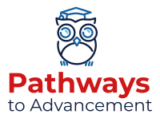As online learning platforms for students and schools continue to gain popularity, making an informed decision when choosing one is crucial. The right platform can significantly impact educational and career goals, so it is essential to understand the benefits and challenges of online learning.
Pros of Online Learning Platforms
One of the key advantages of online learning platforms is their flexibility in terms of scheduling and location. Students can learn at their own pace and access courses and programs from anywhere with an internet connection. This convenience allows learners to balance their education with other responsibilities, such as work or family commitments.
Online learning platforms are typically more affordable than in-person instruction. Students can save on costs associated with student housing, commuting, and on-campus meal programs. Moreover, many platforms offer free or lower-cost courses, making education more accessible to a broader audience.
Another benefit of online learning platforms is the increased networking opportunities they provide. Students can interact with peers from remote locations around the world, promoting diverse perspectives and fostering cross-cultural understanding. This global reach can also enhance career prospects by connecting learners with professionals in their field.
Online learning platforms offer a wide range of courses and subjects, ensuring that students can access diverse educational content. This variety allows learners to specialize in specific subjects or explore a more general curriculum, depending on their interests and career goals.
Cons of Online Learning Platforms
Despite their numerous advantages, online learning platforms also have some drawbacks. One of the main challenges is the lack of face-to-face interaction, which can make it difficult for students to stay motivated and engaged. Limited opportunities for direct interaction with instructors and classmates can also hinder the development of strong relationships and a sense of community.
Technical difficulties can pose another challenge for online learners. Slow or spotty internet connections can disrupt the learning experience, while some students may not have access to the necessary technology or internet connection to participate effectively in online courses.
Potential distractions and isolation are also concerns with online learning platforms. It is essential for students to develop self-discipline and time management skills to stay focused and avoid procrastination. Additionally, the lack of social interaction can lead to feelings of isolation, making it crucial for learners to proactively seek out social connections and support networks.
Lastly, many online learning platforms are self-directed.

Factors to Consider When Choosing an Online Learning Platform
Before selecting an online learning platform, it is essential to consider various factors that can impact your educational experience. First, assess your learning style and preferences to determine the best fit for an online platform. This includes weighing the pros and cons of online vs. in-person instruction and identifying which environment will best support your learning needs.
Cost and financial considerations are also crucial when deciding on an online learning platform. Evaluate the affordability of different options and take advantage of resources like Pathways to Advancement’s financial guide to make informed decisions. This can help you balance the quality of education with your budgetary constraints.
Finally, align your course selection with your educational and career goals. Utilize resources such as Pathways to Advancement’s career blogs and education blogs to guide your decision-making process. This approach ensures that your chosen online learning platform supports your objectives and sets you up for success in your chosen field.
Learning Styles
Learning styles are important to consider when deciding if an online learning platform is right for you. Not all platforms are created equally, but most often than not, they are self-directed learning platforms. We’ll go into the differences between self-directed learning and guided-learning. If self-directed learning is your kind of learning style, then moving forward with an online learning platform might be the right decision for you. If guided-learning is more your style, then consider choosing a traditional degree or vocational training program.
Self-Directed Learning
Self-directed learning, often referred to as SDL, is an educational approach where individuals take the initiative and responsibility for their own learning. In self-directed learning, learners have a significant degree of control over what, when, where, and how they learn. This approach is characterized by several key principles:
Autonomy: Learners are responsible for setting their own learning goals, choosing what they want to learn, and determining the pace at which they learn. They have the freedom to explore topics that interest them and design their own learning path.
Motivation: Self-directed learners are motivated by their intrinsic interest in the subject matter. They are driven by a desire to gain knowledge, skills, or achieve specific personal or professional goals.
Self-regulation: Learners monitor their progress, assess their own understanding, and make adjustments as needed. They may seek resources, feedback, and support when necessary, but they take an active role in evaluating their own learning.
Flexibility: Self-directed learning can occur in various settings, including formal classrooms, online courses, workplace environments, or through independent study. Learners have the flexibility to choose the format and resources that best suit their learning preferences.
Lifelong learning: Self-directed learning often aligns with the concept of lifelong learning, where individuals continue to acquire knowledge and skills throughout their lives, adapting to changing circumstances and new challenges.
Problem-solving and critical thinking: Self-directed learners are encouraged to engage in critical thinking, problem-solving, and reflection. They are often presented with open-ended questions and scenarios that require independent analysis and creativity.
Self-assessment: Self-directed learners are responsible for assessing their own knowledge and skills. They set criteria for evaluating their progress and determine when they have met their learning objectives.

Guided-Learning
Guided learning, also known as guided instruction or guided education, is an instructional approach in which learners receive structured support and direction from educators or instructional materials as they acquire new knowledge and skills. This approach is designed to strike a balance between direct instruction and independent, self-directed learning. Guided learning provides a framework and guidance for learners to help them progress effectively. Here are some key characteristics and principles of guided learning:
Teacher or Facilitator Involvement: In guided learning, educators play an active role in the learning process. They provide clear objectives, instructions, and support to help learners understand and engage with the content.
Structured Learning Paths: Guided learning typically follows a predefined curriculum or learning path. Educators or instructional materials outline the sequence of topics, activities, and assessments to ensure a systematic and coherent learning experience.
Scaffolding: Scaffolding is a key concept in guided learning. It involves breaking down complex tasks into smaller, manageable steps. Educators provide support and resources, gradually reducing the level of assistance as learners gain confidence and competence.
Feedback and Assessment: Regular feedback and assessment are integral to guided learning. Educators assess learner progress, identify areas of improvement, and provide constructive feedback to help learners refine their skills and understanding.
Active Engagement: Learners are encouraged to actively engage with the content and participate in various activities, discussions, and exercises. This active involvement helps solidify their learning.
Differentiated Instruction: Guided learning recognizes that learners may have different needs, abilities, and learning styles. Educators may adapt their teaching methods to accommodate these individual differences.
Gradual Release of Responsibility: Over time, as learners become more proficient, the responsibility for learning is gradually shifted from the educator to the learner. This process allows learners to become more self-reliant and independent.
Supportive Learning Materials: Guided learning often relies on a variety of instructional materials, such as textbooks, workbooks, digital resources, and multimedia content, to supplement the learning experience.
Popular Online Learning Platforms
Several well-known online learning platforms offer diverse courses and programs catering to various needs. Coursera, edX, Emeritus, Springboard, Udacity, and Udemy each have unique offerings and features, so it is essential to compare and contrast them to determine the best fit for your individual needs. These platforms provide a wide array of courses, from professional development to degree programs, appealing to learners with different goals.
In addition to these popular platforms, niche options focus on specific subjects or industries. Coding bootcamps, mini-MBA programs, and vocational schools offer targeted education for those pursuing specialized fields. Micro-degree programs and online degree programs in fields like cybersecurity, computer science, and business administration provide focused learning opportunities to help students excel in their chosen careers.
Unlock Your Learning Potential
As we’ve explored, online learning platforms for students and schools come with both advantages and disadvantages. Making an informed decision when choosing a platform is essential to maximize the benefits and overcome potential challenges. Pathways to Advancement is committed to helping adult learners and non-traditional students achieve their educational and career goals. To further your educational journey and find the right online learning platform for you, visit Pathways to Advancement for more information and resources.



